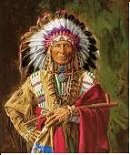- Posts: 2612
- Thank you received: 0
Evergreen, Ever Delicious
- CinnamonGirl
-
 Topic Author
Topic Author
- Visitor
-

26 Dec 2010 08:11 #1
by CinnamonGirl
Evergreen, Ever Delicious was created by CinnamonGirl
http://www.nytimes.com/2010/12/25/opini ... dzepi.html
At my restaurant we use their needles as a spice. You can cook with a branch of spruce or fir as you would a sprig of rosemary or thyme. Wouldn’t it be beautiful if families gathered after Christmas, festively removed the decorations and then cut off the tasty needles of the tree to flavor their food?
The needles can be dried and mixed into a powder that makes a light, citrus-y and very aromatic spice. Sprinkle that powder into cookie dough, add some to rice as you cook it, or even rub it on chicken before roasting. Dried needles can even be used to smoke meat, and then you can use the tree’s wood for kindling.
Small spruce branches can also be used to add flavor. The next time you steam spinach or other greens, throw one in at the very last minute to give a light aroma and a lemony feel to the dish. Or, after cooking steak in a pan, flavor the cooking butter with a fistful of spruce needles. I find that game meats respond especially well to these flavors — which is not surprising, when you consider how animals like to eat the tender, bright-green shoots in spring.
At my restaurant we use their needles as a spice. You can cook with a branch of spruce or fir as you would a sprig of rosemary or thyme. Wouldn’t it be beautiful if families gathered after Christmas, festively removed the decorations and then cut off the tasty needles of the tree to flavor their food?
The needles can be dried and mixed into a powder that makes a light, citrus-y and very aromatic spice. Sprinkle that powder into cookie dough, add some to rice as you cook it, or even rub it on chicken before roasting. Dried needles can even be used to smoke meat, and then you can use the tree’s wood for kindling.
Small spruce branches can also be used to add flavor. The next time you steam spinach or other greens, throw one in at the very last minute to give a light aroma and a lemony feel to the dish. Or, after cooking steak in a pan, flavor the cooking butter with a fistful of spruce needles. I find that game meats respond especially well to these flavors — which is not surprising, when you consider how animals like to eat the tender, bright-green shoots in spring.
Please Log in or Create an account to join the conversation.
- major bean
-

- Mountain Legend
-

Less
More
26 Dec 2010 08:20 #2
by major bean
Regards,
Major Bean
Replied by major bean on topic Evergreen, Ever Delicious
I have never thought of using conifers or firs as spices. How does a person determine that the sap will not harm or poison you? I have never noticed any other living creature eating the needles of these trees. That would indicate to me that they are not beneficial as food. I do not mean to hijack your thread but this question of how people have been able to determine what is edible has puzzled me for quite some time.
Regards,
Major Bean
Please Log in or Create an account to join the conversation.
- CinnamonGirl
-
 Topic Author
Topic Author
- Visitor
-

26 Dec 2010 08:27 #3
by CinnamonGirl
Replied by CinnamonGirl on topic Evergreen, Ever Delicious
It would take alot of eating to get rid of these trees. LOL
Please Log in or Create an account to join the conversation.
- Whatevergreen
-

- Mountain Advisor
-

Less
More
- Posts: 281
- Thank you received: 0
26 Dec 2010 08:57 #4
by Whatevergreen
Replied by Whatevergreen on topic Evergreen, Ever Delicious
There are over a hundred different species of pine. Not only can the food be used as a supply of nourishment but, also can be used for medicinal purposes.
Edible parts of the pine include:
* Pine needles
* Inner bark
* Seeds
* Pine needle oil a colorless or yellowish bitter essential oil obtained from the needles of various pines (especially Pinus mugo) and used in medicine chiefly as an inhalant in treating bronchitis
http://medical.merriam-webster.com/medical/pine-needle%20oil
Possibly looked at as a form of homeopathic treatment, yet I am of the belief that the Native Americans found treatments for many ailments through indigenous knowledge of medicinal plants. The Native Americans believed in the benefits of pine needle tea. They frequently used it to treat:
phlegm reduction
sinus symptoms
sore throats (high vitamin C content)
ulcers
headaches
scurvy
High in vitamin C content pine needle oil is used by some in aroma therapy for sinus and infections of the respiratory system.
http://www.fiu.edu/~health/assets/pdf/AromaTherapy%20booklet.pdf
“Sinus & Cold Blend: A combination of Eucalyptus, Pine Needle, Cypress, &
Lavender. It is known for its ability to fight infections. Great to use during the
cold and flu season.”
Some argue that the pine needle oil has antimicrobial, antibacterial and antiseptic properties. On the other side some companies have been penalized for making false representations about the overall benefits of bee pollen. So do your research and make an educated decision.
Recent study to examine anti-obesity effects of pine needle extract show positive results:
http://www.jstage.jst.go.jp/article/bpb ... 1/_article
http://www.ncbi.nlm.nih.gov/pubmed/17474862
“These results demonstrate that pine needles exhibit strong antioxidant, antimutagenic, and antiproliferative effects on cancer cells and also antitumor effects in vivo and point to their potential usefulness in cancer prevention.”
Edible parts of the pine include:
* Pine needles
* Inner bark
* Seeds
* Pine needle oil a colorless or yellowish bitter essential oil obtained from the needles of various pines (especially Pinus mugo) and used in medicine chiefly as an inhalant in treating bronchitis
http://medical.merriam-webster.com/medical/pine-needle%20oil
Possibly looked at as a form of homeopathic treatment, yet I am of the belief that the Native Americans found treatments for many ailments through indigenous knowledge of medicinal plants. The Native Americans believed in the benefits of pine needle tea. They frequently used it to treat:
phlegm reduction
sinus symptoms
sore throats (high vitamin C content)
ulcers
headaches
scurvy
High in vitamin C content pine needle oil is used by some in aroma therapy for sinus and infections of the respiratory system.
http://www.fiu.edu/~health/assets/pdf/AromaTherapy%20booklet.pdf
“Sinus & Cold Blend: A combination of Eucalyptus, Pine Needle, Cypress, &
Lavender. It is known for its ability to fight infections. Great to use during the
cold and flu season.”
Some argue that the pine needle oil has antimicrobial, antibacterial and antiseptic properties. On the other side some companies have been penalized for making false representations about the overall benefits of bee pollen. So do your research and make an educated decision.
Recent study to examine anti-obesity effects of pine needle extract show positive results:
http://www.jstage.jst.go.jp/article/bpb ... 1/_article
http://www.ncbi.nlm.nih.gov/pubmed/17474862
“These results demonstrate that pine needles exhibit strong antioxidant, antimutagenic, and antiproliferative effects on cancer cells and also antitumor effects in vivo and point to their potential usefulness in cancer prevention.”
Please Log in or Create an account to join the conversation.
- major bean
-

- Mountain Legend
-

Less
More
- Posts: 2612
- Thank you received: 0
26 Dec 2010 09:14 #5
by major bean
Regards,
Major Bean
Replied by major bean on topic Evergreen, Ever Delicious
Well, I guess that I need to contact my mother and father and ask if I was ever given pine products to cure my illnesses. My family dwelled in the Chickasaw Nation, which is located in the savannah between the wooded portion of eastern Oklahoma and the arid portion of western Oklahoma. There were no conifer trees in this area, only oak and softwoods along the creeks. I do not know that my family would have retained any knowledge of medical cures involving conifers.
Regards,
Major Bean
Please Log in or Create an account to join the conversation.
- Wayne Harrison
-

- Mountain Legend
-

Less
More
- Posts: 6722
- Thank you received: 72
26 Dec 2010 11:13 #6
by Wayne Harrison
Replied by Wayne Harrison on topic Evergreen, Ever Delicious
Please Log in or Create an account to join the conversation.
- CinnamonGirl
-
 Topic Author
Topic Author
- Visitor
-

26 Dec 2010 11:15 #7
by CinnamonGirl
Replied by CinnamonGirl on topic Evergreen, Ever Delicious
Not bacon again......
Please Log in or Create an account to join the conversation.
- Wayne Harrison
-

- Mountain Legend
-

Less
More
- Posts: 6722
- Thank you received: 72
26 Dec 2010 11:33 #8
by Wayne Harrison
Replied by Wayne Harrison on topic Evergreen, Ever Delicious
Sorry. Back on topic...
There's a Spruce tree on a trail that we take newbie cavers along that has bark that smells like butterscotch. I have no idea what kind of Spruce it is. We call it "The Butterscotch Tree."
There's a Spruce tree on a trail that we take newbie cavers along that has bark that smells like butterscotch. I have no idea what kind of Spruce it is. We call it "The Butterscotch Tree."
Please Log in or Create an account to join the conversation.
- Whatevergreen
-

- Mountain Advisor
-

Less
More
- Posts: 281
- Thank you received: 0
26 Dec 2010 15:42 #9
by Whatevergreen
Replied by Whatevergreen on topic Evergreen, Ever Delicious
The bark of Ponderosa Pine smells like butterscotch or sometimes like vanilla. We have a few small young pines on one of our properties that the deer like to nibble on.
Please Log in or Create an account to join the conversation.
- Local_Historian
-

- Mountain Legend
-

Less
More
- Posts: 2321
- Thank you received: 1
26 Dec 2010 21:33 #10
by Local_Historian
Replied by Local_Historian on topic Evergreen, Ever Delicious
I was going to say, I see squirrels eating frsh pine neeedles every year, and they keep leaving pine cone leavings on my porch after they get the seeds out. And pinon nuts from the pinon pines are delicious.
Please Log in or Create an account to join the conversation.
Time to create page: 0.158 seconds







